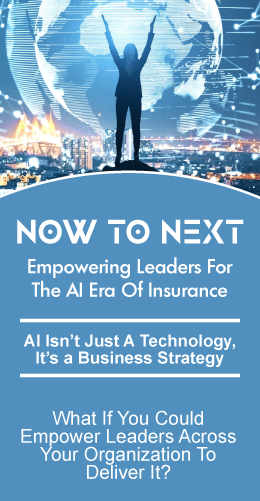
Covid-19 is rapidly changing our world. It’s accelerated the digital transformation of our society, businesses, and personal lives by at least 5 years. The digital leaders in insurance are responding by accelerating their own digital transformation and initiatives. What that means to fast followers and laggards is that if you expect to survive the 2 – 3 years, It’s time to get your digital game on.
The New Digital Normal Is Here
The leaders in digital insurance were already ahead of the game. So were InsurTechs and big tech companies. Since they have already established a digital core culturally and technically, they can now turn their creative and competitive focus to bringing new Innovative and disruptive infrastructures and solutions to the market to capitalize on the opportunities created by the new digital normal COVID has thrown us into.
Greenfield and MVP Solutions to the Rescue
Let’s start with a quick definition of Greenfield and MVP Solutions.
Greenfield Solutions essentially mean Building Solutions without being constrained by the limitations of your existing core systems or software infrastructure. Essentially it means defining the best set of tools from the most current available technology on the marketplace to develop your application.
MVP solutions AR Solutions that enable you to test the most critical elements of your solution with the least amount of effort so that you can quickly and cost-effectively refine them and get them to market. This approach was popularized by the Lean Startup Methodology.
In the new digitally normal speed to market, breakthrough customer value, and awesome customer experience rule. Legacy systems and development methodologies were never designed to work at these speeds or deliver the state-of-the-art customer experiences the new digital normal requires.
We have talked for years in the industry about how Amazon, Google, and Apple have changed people’s expectations and requirements for customer experience and support. With the entire world in lockdown, everyone is online and everyone is looking for simple, easy to understand, and use applications with 24/7 access to support.
These next-generation platforms and technologies coupled with Greenfield and MVP methodologies not only reduce the time and the cost of development they also reduce operating costs and improve customer satisfaction. Savvy Digital Leaders are creating a virtuous circle by using those newfound profits to reinvest in initiatives that help them access new markets as well as further reduce their costs increasing their competitive advantage.
They are also capitalizing on new and emerging technologies. Those include artificial intelligence, robotic process automation, the integration of Behavioral Science, and new data and analytic sources. By leveraging a Greenfield approach they avoid fighting the constraints of Legacy systems. Systems that were never designed to interoperate easily with external platforms and solutions.
The reduced cost and time it takes to develop these solutions mean that insurers can double down on a test and learn approach throughout the development cycle. This means that the solutions they produce are far more likely to produce breakthrough value for the end customer as well as the company developing them. And that puts the insurers that use them even further ahead of the game and those that don’t even further behind.
Developing Next-gen Insurance Solutions
In addition to developing and applying solutions that improve customer engagement and the effectiveness of Court processes, digital leaders are also looking for new markets and new ways to bring breakthrough value to the end insured.
These next-generation Insurance Solutions will use data and Analytics on a level not previously experienced in the insurance market. A major focus is using data and analytics to create incremental value for the insured. That value will be created by breaking the existing paradigm of insurance. A paradigm that focuses predominantly on product sales and collecting premium and sending claim checks when something bad has happened to the insured. In the digital normal we’re entering data and analytics will be combined with services and solutions from the digital ecosystems surrounding the insured. That combination is shifting the paradigm that creates value not just by paying out a claim, but by increasing the transparency of risk, and predicting, preventing, mitigating, and helping recovery from risk.
In addition to the usage-based insurance models we see today, future insurance offerings will be embedded in digital ecosystems and solutions surrounding the insured.
We will see more on-demand Insurance models, Insurance solutions that are embedded as part of another service or product, bundled Solutions that cut across traditional Insurance business lines, and we will see tremendous growth in the hybrid models where insurance is combined with other services. All of those are far easier to develop and deliver using Greenfield and MVP approaches and they are competitive requirements in the New Digital Normal.
New and Emerging Technology
As discussed legacy systems and development methodologies are no match for the current and emerging technologies and methodologies on the market. New and emerging generations of insurance solutions will be cloud-based. Next-Gen Technologies, Platforms, and Solutions are designed for cloud-based interoperability. They are designed to integrate with other applications through APIs and Microservices. Increasingly they’re designed to support next-gen data models that are data agnostic. They are also designed to create and leverage repositories of componentized code that can reduce the time, testing, and cost of developing other applications. Increasingly there is a market focus on open APIs and API as a service Platforms. This makes it even easier for applications to find and bind with other applications to create the types of Next-Gen Applications we spoke of above without having to develop the code or the services to do that.
In addition to the above, we’re seeing cloud-native core systems come to the market, as well as lo-code no-code platforms and a dizzying array third-party value-added solutions that can be coupled together to create a digital generation of Insurance solutions.
Failure to Scale and the importance of Team, Strategy, and Process.
In the conversations we have had with people throughout the industry including carriers, Insurtech startups, consulting firms, and Technology vendors there’s a common and unfortunate reoccurring theme. That theme is the failure to scale beyond pilot projects.
In the world of innovation, it’s alright if you are developing concepts that never make it to market. In fact, if you don’t, you’re not really involved in innovation. That said, the industry seems to be full of great pilot projects they had real market potential, technical feasibility, and business value that never make it to the streets.
The reason they don’t almost always comes down to a failure to engage and effectively communicate with the key decision-makers in the organization. Without senior executive support and business unit buy-in and participation throughout the design, development, and testing process, failure is preordained.
In addition to team members from the Innovation group, development teams, and the business units, it’s critical to have senior executives proactively involved with and supporting the initiatives. It’s also critical to define the business value expected.
A clear definition of the business value expected should be defined at the outset of the initiative in concert with the key stakeholders. As the roadmap of deliverables is defined a clear statement of the goals of each release should be defined which includes technical functionality expected to be delivered as well as the business value that beliefs should be measured by.
In today’s world, a number of tools are available to define and develop applications in stages. Using these enables teams to rapidly gather input, keep the cost down, and measure the value created quickly and easily. In many cases that can mean starting with a simple sketch are the key parts of the application. Once feedback from customers and stakeholders has been gathered and the concept refined the design can move to wireframes and from there to a clickable prototype. Once a clear minimally viable product has been defined, it’s time to move to a development environment you can continue iterative development with and ultimately launch with.
Building and Getting Buyoff on the Business Case
Building the business case for this it’s pretty simple. The industry had already been moving faster and faster in a digital direction prior to COVID. Those companies who were furthest ahead in their digital transformations were demonstrably the ones impacted the least by COVID. Their executives now have proof positive of the value of the digital investment they’ve made. Those leaders are now looking for opportunities to further leverage their digital capabilities and culture. They will do that by securing positions in new growth markets and products with Digital Generation solutions and partnerships.
New tools platforms and methodologies cost far less in terms of development and ongoing support than legacy environments. They were designed to support agile development methodologies and to connect to other cloud-based solutions and data.
Companies that make a choice to hold off on spending or decide to only incrementally improve existing systems and operations will no longer be competitive in the next two to three years. The market, the digital leaders, and the key ecosystem partners’ will be playing by a totally different set of rules. They’ll be playing a game that today’s laggards and even fast followers won’t recognize and don’t have the infrastructure, culture, or strategy to compete with.
It’s Time To Get Your Game On Right Here, Right Now in 2020
The message is, it’s time to get your digital game on. If not, you can try to survive in the digital dust and less profitable opportunities left behind by the digital leaders.







